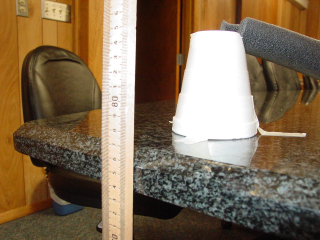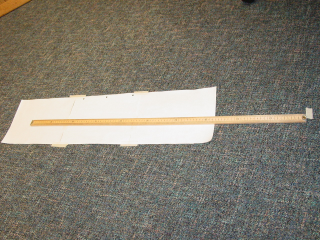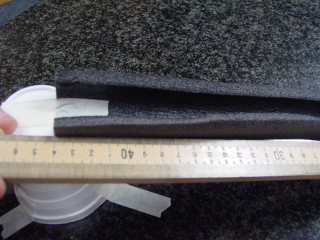Data Collection and Reporting
OK, you have a bunch of marks on the paper you laid out. You
need to know where these marks are in relation to the end of the ramp, so get
out your Data Table, and get ready to write down
several numbers.
First, measure from the floor to the top of the cup, and
write that down in the Y0 cell.

Now you need to figure out where the end of the ramp is in
relation to the floor. To find out where that point is, get your plumb bob
out, and hold it directly in line with the end of the ramp, on the side and
see where the bob points. Place a small strip of masking tape perpendicular to
the plumb bob to indicate where the ramp ends in the X direction.
Just as we picked the floor to be our origin in the
Y direction, the ramp end is our origin in the X
direction.

Set your meter stick on the floor, extending out in a line
with the points where the marble hit on the paper, beginning at the strip of
masking tape you put on the floor. Note each of the landing points of the
marble on the Data Table, in the
X1 column. In the H column, enter the
starting height that got you out to that landing place.

The last thing we need to figure out is as what angle the
marble leaves the ramp. To find this, measure along the ramp in line with the
predominant slope of the end ramp. This measurement is mostly reliant upon
your eye, so make sure your teammates agree with the measurement. Based on
Pythagoras' Theorem of right triangles, A2 + B2 =
C2, find the other side of the triangle (the table side),
which is ΔX. ΔY is the height of the end
of the ramp, minus the height of the table. Enter these two values into the Data Table in the ΔX &
ΔY cells.



 The Shodor Education Foundation, Inc.
The Shodor Education Foundation, Inc.